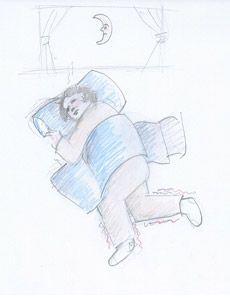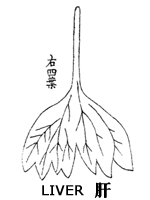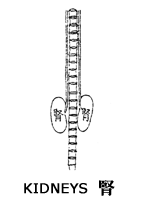 Restless legs syndrome is characterized by extremely unpleasant feelings in the legs.
Restless legs syndrome is characterized by extremely unpleasant feelings in the legs.
|
Restless legs syndrome (RLS) is a common disorder, which is characterized by extremely unpleasant feelings in the legs. The most unusual aspect of the condition is that symptoms tend to be activated or aggravated by resting or lying down, while moving the legs relieves the discomforts, individuals have an uncontrollable and strong urge to move their legs.
It is reported that RLS has affected 10% of the population in America, about 2-3% have moderate to severe symptoms that seriously disrupt daily life. Women are affected slightly more often than men, and the most severe symptoms are among middle-aged or older.
What causes restless legs syndrome (RLS)?
In most cases, the cause of restless legs syndrome (RLS) is unknown. It may have a hereditary influence, especially if the condition started at an early age. Evidence suggests that the following factors or conditions are associated with the development or worsening of RLS:
 |
Pregnancy |
 |
Obesity |
 |
Iron deficiency and anemia |
 |
Poor blood flow of the legs such as varicose veins |
 |
Nerve disorders such as peripheral neuropathy and uremia |
 |
Endocrine disorders such as hypothyroidism and diabetes |
 |
Medications such as antidepressants, blood pressure pills, cold and allergy drugs |
 |
Unhealthy life habits such as smoking, alcohol, and coffee |
What are the symptoms of restless legs syndrome (RLS)?
Restless legs syndrome (RLS) individuals typically complain an abnormal, unpleasant sensation deep inside the legs, they commonly describe it as crawling, creeping, itching, pulling, aching, burning or throbbing. Sometimes, the arms and other body parts may be involved too. The symptoms can vary from person to person, and the frequency and severity can even fluctuate from day to day.
Some individuals may have difficulty to describe their symptoms, but they always report having a strong urge to move the legs, stretching, jiggling the legs, pacing the floor, massage or walking can help them relieving from the unpleasant feelings. Since RLS symptoms usually start or get worse at night, sleeping deprivation is common, there may also have daytime fatigue, drowsy or irritability. RLS can be associated with a condition called periodic limb movement disorder (PLMD) which present with involuntarily twitching or jerking movements of the legs during sleep.
If you have above problem, you should consult a doctor for proper treatment. Many of the individuals never seek medical attention, because they worry that their symptoms won't be taken seriously. Gathering the details in advance can help get ready for the appointment with your doctor, including symptoms, triggering factors, relieving methods, medication use, personal and family medical histories. You can also write down questions to ask.
In general, RLS symptoms will gradually get worse over time, however, treatment can help control the condition, ease symptoms and improve sleep. If there are known underlying conditions, such as iron deficiency or peripheral neuropathy, appropriate treatment can usually relieve the leg symptoms. Otherwise, some medications are available to ease the discomforts. It should be kept in mind that trials for different drugs may be necessary to find the right medication and dosage for each individual, doctor may prescribe a combination of medications to treat the condition.
In case if you are diagnosed with RLS and no underlying condition has found, traditional Chinese medicine (TCM) methods are worth trying.
From a TCM perspective, development of restless legs syndrome (RLS) has internal and external origins. The kidney system stores essence (jing) which further transforms into marrow for the bones and brain, kidney weakness leads to bone and brain dysfunctions. The liver system stores blood and rules tendons, liver weakness leads to poor muscle and tendon conditions. On the other hand, external pathogens such as wind, dampness or coldness tend to take advantage of extreme weather changes or temporary bodily weakness, and attack the body. When they enter the leg meridians and disturb the localized blood and qi (vital energy) activities, RLS symptoms will be induced. The reason that RLS symptoms occur more notably at rest is that more blood flow back to the liver for storage during rest, less blood is circulating inside the body, and metabolic wastes tend to accumulate, thus the RLS symptoms can easily be triggered. Generally, TCM categorizes RLS as a blood impediment, and the treatment is mainly focused on resuming the normal blood and qi activities of the legs.
 |
 |
| TCM liver and kidney illustrations |
|